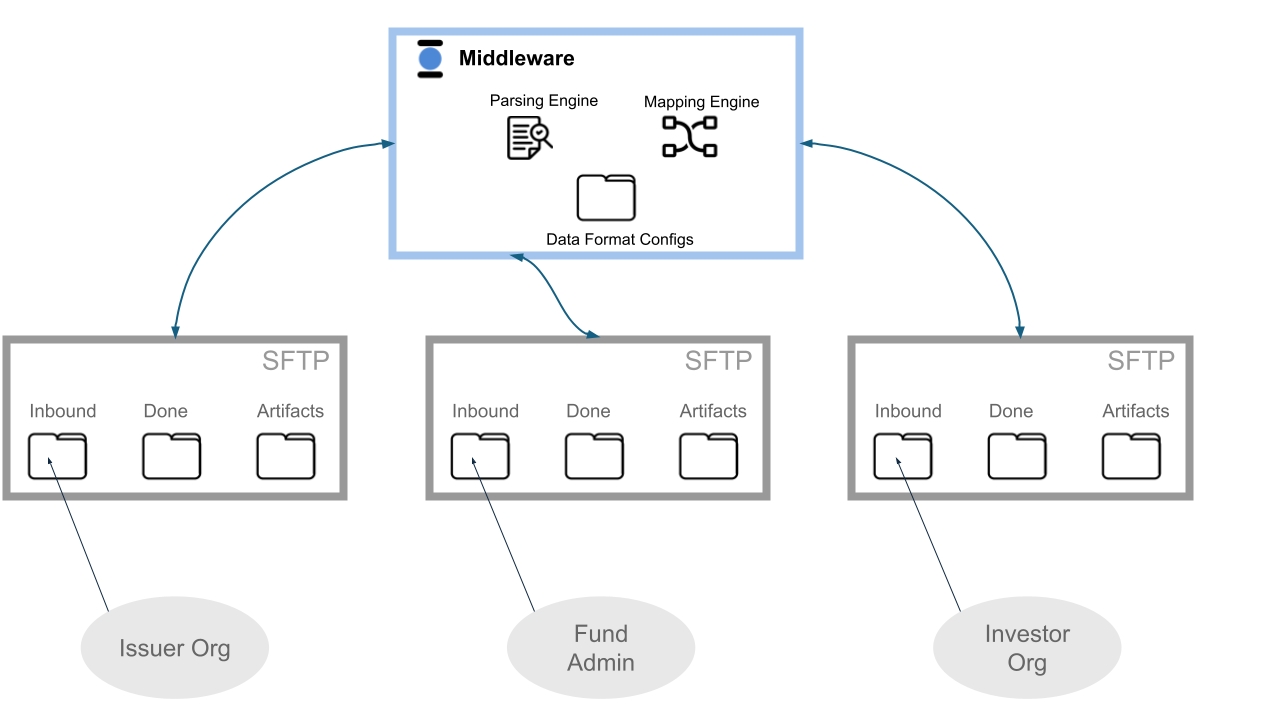
Rev. 3 Jul 2025
We offer two methods of integration with our platform:
file-based integration via middleware
direct API integration
Many firms currently use file-based data exchange to track alternative investment transactions. Our file-based integration approach enables firms to leverage the files and processes already in place to initiate integration with our platform.
This approach uses customized integration middleware to transform data transmitted between your back-office applications and our integration API.
Features include:
Support for various connectivity types and data formats, including File/SFTP and REST API calls.
Additional connectors can be developed (e.g., SOAP or MQ).
Integration middleware can handle data transmissions initiated by back-office systems and incoming transactions from counterparties. Integration middleware module is deployed on the same dedicated AWS account with the Corastone node/API.
Single workflow combines direct API calls, file-based integrations, and actions performed in the UI.
Middleware components include:
a parsing engine for reading and extracting data
a mapping engine for translating data from one data model to another
data format configs, for defining how mappings align
The parsing engine:
retrieves files to be processed from Inbound folder on sftp site
extracts the data and provides it to the mapping engine
places processed files in Done folder on sftp site
Note: Outputs are placed in the Artifacts folder on sftp site
The mapping engine:
aligns external data with Corastone data based on definitions in the data format configs
produces input and output files for data transfer
The file exchange process is SFTP based, with SFTP sites that can be hosted by either party. The middleware processes each file upon delivery.
Direct API integration eliminates the file transfer and parsing process to align back-office data and processes with our integration API.
Our platform is designed to orchestrate private investment transactions, not just track them. Your preferred approach depends on your needs and your ability to provide information on the data and formats to be exchanged. You can also consider an initial file-based integration as a first step towards migrating to our solution.
align current processes via data exchange
enhance current processes with direct platform integration
provide process documentation, file documentation, and sample files so our team can configure the middleware
simplify and automate processes across organizations
few to no process changes


